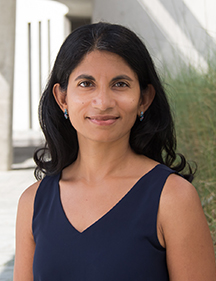In Brief
TSRI scientists win international photo contest
Three biologists at The Scripps Research Institute (TSRI) have been honored for their skill in capturing eye-catching images in the lab. Researchers Roberta Nowak, Kasturi Pal, PhD, and Catherine Cheng, PhD, have been named winners in the Vector Laboratories 2017 Photo Contest.
All three winners are members of Velia Fowler’s, PhD, Laboratory for Cellular Architecture, and their images show the amazing range of research at TSRI.

This image by Nowak and Pal shows mouse megakaryocyte spreading on collagen coated cover slip. Single optical section of Airyscan stack showing myosin-GFP (green) signal along with phalloidin (red) and vinculin (blue).

The lens is a transparent and avascular organ in the front of the eye that is responsible for focusing light onto the retina in order to transmit a clear image. In humans, ciliary muscles contract to change the tension of zonule fibers to deform the lens, leading to an increase in the lens optical power to focus on nearby objects, a process known as accommodation. This image from Cheng shows a 3D reconstruction of a confocal z-stack through a human lens with attached cilliary body and zonules. The zonules are stained with wheat germ agglutinin (red) and microfibril-associated glycoprotein MAGP-1 (yellow). The ciliary body (foreground) and the lens (behind the zonules) are stained with phalloidin (F-actin, green) and DAPI (nuclei, blue).
CA Onsite Clinic scheduled for March 7
The next onsite immunization clinic on the California campus will be held from 9:30 to 11 a.m., Wednesday, March 7 in the Hazen Theory building, rooms 203/205. Appointments are not needed.
Conducted by Sharp Rees-Stealy staff, the clinic will provide hepatitis B vaccination free of charge to all TSRI employees. Environmental Health & Safety Occupational Medicine must pre-authorize all other procedures based on the employee's working conditions. These procedures include tetanus, diphtheria and pertussis (Tdap) vaccines and other titers, immunizations and procedures.
Supriya Srinivasan to present Faculty Lecture on March 14
Supriya Srinivasan, PhD, TSRI assistant professor in the Department of Molecular Medicine, will continue the Faculty Lecture Series on Wednesday, March 14, with a presentation, “Neuroendocrine Control of Body Fat Metabolism: Lessons from C. elegans.”
The lecture begins at 4 p.m. in The Committee Lecture Hall in the Skaggs/Molecular Biology Building (MBB2N), followed by a reception in the Beckman Building first-floor galleria.
For further information, see the Faculty Lecture Series webpage. The series is supported by an endowment from the Cochrane-Cartan families, established by TSRI Professor Emeritus Charles G. Cochrane.
CA Biosafety Committee Meeting Materials Due March 28
To receive consideration at the next TSRI Institutional Biosafety Committee, registration documents must be submitted to Environmental Health and Safety by Friday, February 2, via email to rachellv@scripps.edu. The meeting will be held Wednesday, April 11, 2:30 to 3:30 p.m., building 3301, P2 conference room.
Send comments to: press[at]scripps.edu














